Don't wanna be here? Send us removal request.
Text
Isaiah Bradley did pretty much exactly what Steve Rogers did. He went against express orders to do the right thing; he broke POW’s that the top brass had written off as expendable out of captivity and saved countless lives. He was a hero.
When Steve returned to his superiors, what did he get? A round of applause. Total forgiveness and praise. His fake rank of Captain turned into a real one despite his total lack of experience and training. A new fancy shield. A special squad of his friends given carte blanche to go on secret missions. A media tour. His face on magazines. TV specials. A place in the history books as a perpetual hero of our times.
What did Isaiah get? 30 years of imprisonment, torture, experimentation. He was vilified for doing the exact same thing that Steve was lauded for. Separated from his family, treated as a criminal, dehumanised and degraded. A lifetime of trauma served to him by the very country that he gave everything up for.
His story mirrors not just the African-American victims of human experimentation in the US but also the treatment of black soldiers who had given up everything to fight for the US in WWII and returned to violence and discrimination, and the plight of African-American soldiers fighting in Korea immediately after desegregation of the army. His erasure from the history books parallels the real erasure of almost a million black veterans of WWII from the documentary evidence of the war.
Though Isaiah Bradley is fictional, his story and treatment are firmly based in reality. I have to applaud everyone involved in this production, but particularly Malcolm Spellman, Carl Lumbly and Anthony Mackie, for bringing this character and story to life in such a impactful way, on one of the biggest stages that they could. Millions of Americans will now be reckoning with a disgraceful part of their history (and present) that has been ignored and covered up for so long, and that’s truly powerful.
3K notes
·
View notes
Photo
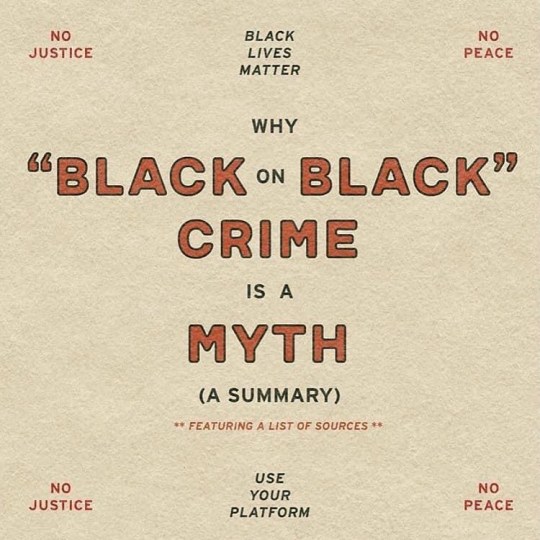
For folks that keep talking about “Black on Black” crime. 😡😡😡 https://www.instagram.com/p/CB_HHwDHXbG/?igshid=4sujsd5f2eyo
3 notes
·
View notes
Photo
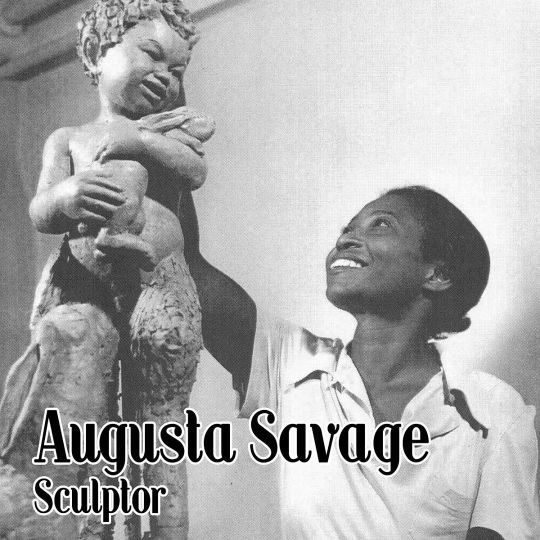
#LatePost “A Tribute to the 100th Anniversary of the Harlem Renaissance” Day 12: Augusta Savage was a native of Florida and a sculptor from a very young age. As a child, her father, a poor Methodist minister attempted to beat the art out of his child because he believed that art was a “sinful practice.” The principal at her high school supported her art and allowed her to teach a clay modeling class. Savage left Florida for New York City in order to attend the School of American Sculpture; however, she could not afford it and was able to attain a scholarship to attend Copper Union 1921. After completing her studies, she worked in laundries to support her family, who had moved up from Florida. Savage received her first commission, a bust of W.E.B. du Bois for the Harlem Library around the same time. Savage won the Otto Kahn Prize in a 1928 exhibition at The Harmon Foundation with her submission “Head of a Negro.” With the assistance of the Black community and Julius Rosenwald Fund, Savage was able to attend art school in France. Upon her return, she opened a studio in Harlem to anyone who wanted to paint, draw, or sculpt. The studio would evolve into the Harlem Community Art Center. Savage created “Lift Every Voice and Sing” (or “The Harp”) as a commission for the 1939 New York World’s Fair. Many of Savage’s pieces were created using clay or plaster because she did not have the funds for bronze. Savage moved to Saugerties, New York to continue to teach art to children. #BlackHistoryMonth #BHM https://www.instagram.com/p/B87XLfDnHgx/?igshid=1vrow4yym8jg0
2 notes
·
View notes
Photo
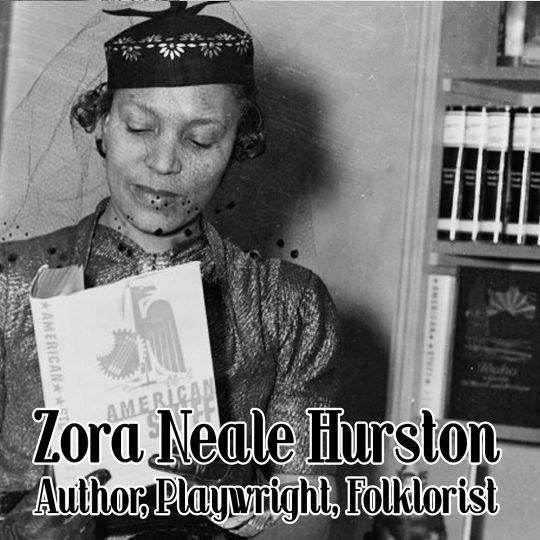
#LatePost “A Tribute to the 100th Anniversary of the Harlem Renaissance” Day 11: Another person that quickly comes to mind, when people hear “Harlem Renaissance” is Zora Neale Hurston. Hurston was born in Alabama but grew up in Eatonville, Florida, one of the first all-Black incorporated towns in the United States. Throughout her career, she would use the town as the setting for her stories. She attended Morgan College, the high school division of Morgan State University before attending Howard University. Hurston was an early initiate of Zeta Phi Beta Sorority, Inc. and co-founded the school newspaper, The Hilltop. She eventually earned her bachelor’s degree in anthropology from Barnard College in 1928. Hurston’s research throughout the South was provided for by Charlotte Osgood Mason, a literary patron, under the stipulation that she would receive all of the material Hurston collected about Negro music, folklore, literature, hoodoo, and other forms of culture. Hurston’s short story, “Spunk”was selected by Alain Locke for his anthology, “The New Negro.” In 1926, Hurston along with Langston Hughes, and Wallace Thurman produced a literary magazine called Fire!! that featured many of the young artists and writers of the Harlem Renaissance. She also collaborated with Hughes on the play, “Mule Bone: A Comedy of Negro Life,” in 1930. Hurston's first three novels were published in the 1930s: Jonah's Gourd Vine (1934); Their Eyes Were Watching God (1937), written during her fieldwork in Haiti and considered her masterwork; and Moses, Man of the Mountain (1939). Hurston’s last book, “Barracoon: The Story of the Last Black Cargo,” which chronicles the life of Cudjoe Kazzola Lewis, the last survivor of the Transatlantic Slave Trade. She interviewed him in the late 1920s. #BlackHistoryMonth #BHM https://www.instagram.com/p/B87NXM0nt2I/?igshid=ukbztappgvfo
0 notes
Photo
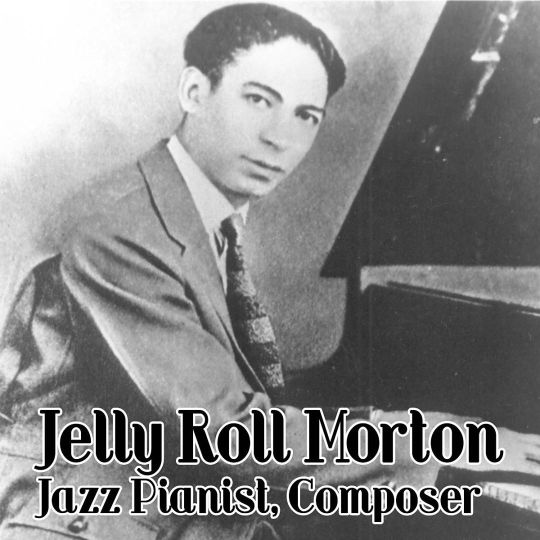
#LatePost “A Tribute to the 100th Anniversary of the Harlem Renaissance” Day 10: Jelly Roll Morton was a New Oreleans native who was a pivotal figure in early jazz. Morton became jazz’s first arranger with the publishing of his “Jelly Roll Blues” composition in 1915. Morton displayed musical talent at an early age; and at the age of fourteen, Morton began working as a piano player in a brothel. He began touring in 1904 around the South. By 1914, he began to write down his compositions to various songs. In 1926, Jelly Roll received a recording contract from Victor Talking Machine Company. This allowed him to record with his band, Jelly Roll Morton & His Red Hot Peppers in the company’s Chicago studios. He then moved to New York City, where he continued to record. After a few years in NYC, he moved to Washington, D.C. where he was heard by folklorist, Alan Lomax. Lomax asked him to be interviewed for the Library of Congress. These interviews led to over eight hours of Jelly Roll playing the piano and talking with Lomax. #BlackHistoryMonth #BHM https://www.instagram.com/p/B87CX_unTgD/?igshid=17g7pvc5gr6jf
0 notes
Photo
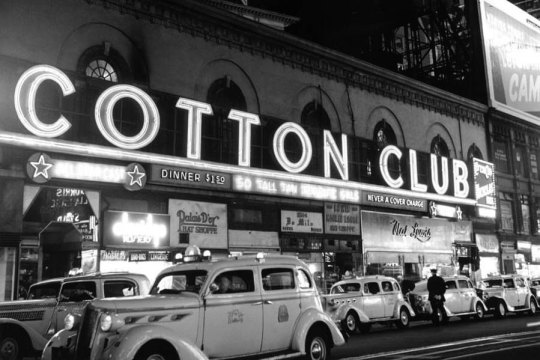
#LatePost “A Tribute to the 100th Anniversary of the Harlem Renaissance” Day 7: There were many popular places to go for entertainment during the Harlem Renaissance; however, the Cotton Club on 142nd Street and Lenox Avenue was one of the most well-known. Cotton Club was at its highest level of popularity during the Prohibition era. At the turn of the decade, heavyweight champion, Jack Johnson rented the upper floor of a building in the heart of Harlem and opened up a supper club called Club Deluxe. In 1923, a bootlegger, Owney Madden, took over the club and changed the name to the Cotton Club. The shoes at the club were called revues featured dancers, singers, comedians, and variety acts, as well as a house band. The Cotton Club helped launch or was the home of many artists during the Harlem Renaissance including Duke Ellington, Cab Calloway, Lena Horne, Ethel Water, Dorthy Dandridge, and Sammy Davis, Jr. The Cotton Club is not without criticisms. As much as it was operated during the Prohibition Era, it was also during the time of Jim Crow. The venue was a “whites-only” establishment. Many of the club’s chorus girls were expected to be at least 5’6”, light-skinned, and under 21 years old. Langston Hughes criticized the club as "a Jim Crow club for gangsters and monied whites." He alos believed that the club was similar to the entertainment provided at a zoo and that white "strangers were given the best ringside tables to sit and stare at the Negro entertainment. #BlackHistoryMonth #BHM https://www.instagram.com/p/B8obZmNHYZt/?igshid=gszwmsw0r011
0 notes
Photo
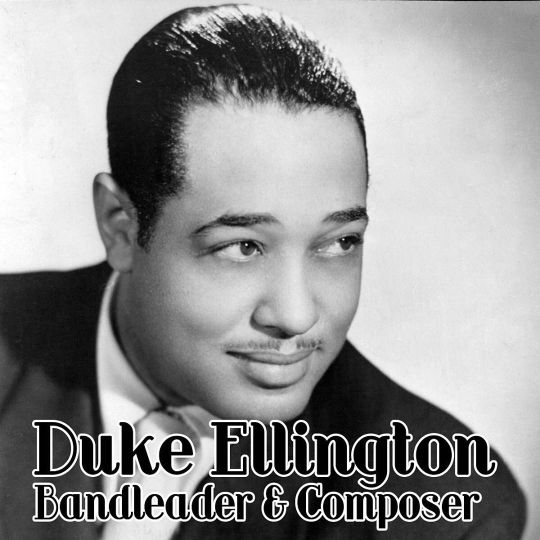
#LatePost“A Tribute to the 100th Anniversary of the Harlem Renaissance” Day 6: During the Harlem Renaissance, big bands and orchestras ruled the live music scene. These ensembles were led by charismatic leaders and Edward Kennedy “Duke” Ellington was one of the most well-known of those leaders. Ellington was born in Washington, DC. He gained the nickname “Duke” at an early age because he had casual manner and dapper dress. He began playing piano at the age of seven. Ellington started putting together musical ensembles in the late 1910s. Ellington made the move to Harlem in the early 1920s. In 1924, Ellington made eight records, including “Choo Choo.” In September of 1927, Ellington and his band became the house band at Cotton Club, one of the most well known clubs of the era. Ellington gained national exposure due to the weekly broadcasts from Cotton Club. Ellington led the orchestra by conducting from the keyboard using piano cues and visual gestures; very rarely did he conduct using a baton. By 1932, his orchestra consisted of six brass instruments, four reeds, and a four-man rhythm section. One of Duke’s most popular songs was “It Don’t Mean a Thing (If It Ain’t Got That Swing)” (1932). Ellington did not just enjoy national success but international success as he toured Europe with his orchestra. #BlackHistoryMonth #BHM https://www.instagram.com/p/B8oRum0nDRP/?igshid=1vr0x2hwxl7io
0 notes
Photo
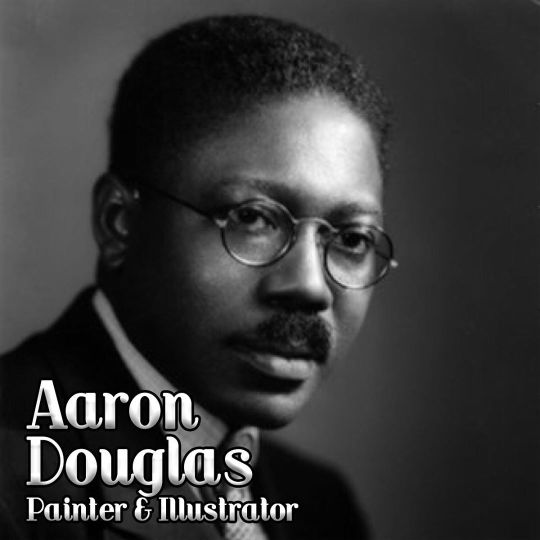
“A Tribute to the 100th Anniversary of the Harlem Renaissance” Day 4: One of the leading artistic figures of the Harlem Renaissance was Aaron Douglas. He has been referred to as the “Father of Black American Art.” Douglas grew up in Topeka, Kansas and attended the University of Nebraska, where he earned a Bachelor of Fine Arts degree in 1922. Before transitioning to Harlem, Douglass taught at Lincoln High School in Kansas City, Missouri for two years. After arriving in Harlem in 1925, he immediately became a part of the cultural scene. Douglass contributed illustrations to the national publications of the National Urban League and the National Association for the Advancement of Colored People. He was commissioned to provide the illustrations for Alain Locke’s “The New Negro” anthology. In addition, he received the commission to illustrate the images for James Weldon Johnson’s “God’s Trombones: Seven Negro Sermons in Verse” in 1927. Douglas had an artistic style that brought together his interest in African art and modernism. He received a fellowship from the Barnes foundation that allowed him to study more African and modern art. Douglas was hired to create a mural for the library at Fisk University in 1930. A few years later, he began working on a series of murals entitled, “Aspects of Negro Life.” Douglas remained an active painter and lecturer until the end of his life. #BlackHistoryMonth #BHM #latepost https://www.instagram.com/p/B8UN2MoHcA2/?igshid=149n6fqzp5ye1
0 notes
Photo
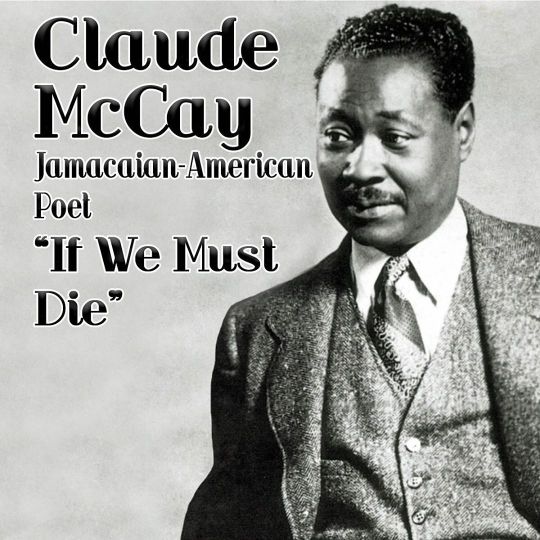
“A Tribute to the 100th Anniversary of the Harlem Renaissance” Day 3: One of the many seminal writers of the Harlem Renaissance was Jamaican American poet and writer, Claude McKay. McKay grew up in Jamaica as a member of a well-to-do family with enough property to vote. He published his first book of poems, Songs of Jamaica, written in Jamaican Patois, in 1912. That year, he left his home country to study at Tuskegee Institute before transferring to Kansas State University. In the late 1910s to the early 1920s, McKay served as co-editor of The Liberator. During the 1920s and into the 1930s, McKay traveled throughout Europe and Northern Africa. During these travels, he published three novels, including his most notable novel, Home to Harlem (1928). His poems challenged white authority while often celebrating his Jamacian background and culture. Much of his poetry during the Harlem Renaissance brought awareness to the racist treatment that many black people faced. While at The Liberator, McKay published one of his most famous poems,”If We Must Die.” The poem calls for any people being oppressed to fight for their freedom and what is right. #BlackHistoryMonth #BHM https://www.instagram.com/p/B8IC2vtHiH6/?igshid=vskmtz8zvyfp
0 notes
Photo
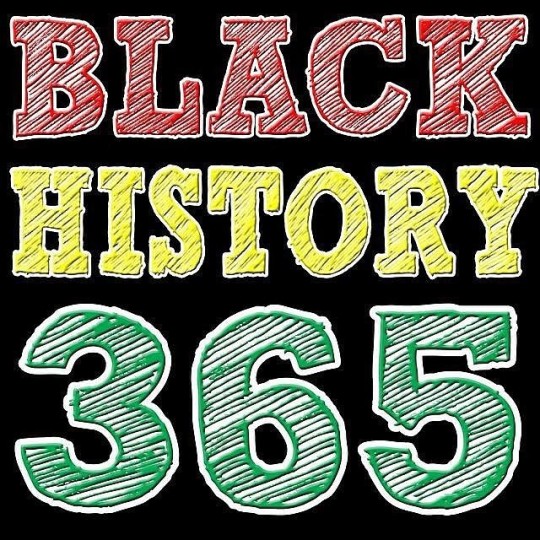
***Special Announcement*** In 2015, I gave you Black History 365. In 2016, I told you about 29 Black People You Should Know (But Probably Never Heard Of). In 2017, I revealed my “28 Under 28: The Next Generation of Black Leaders.” In 2018, I highlighted Historically Black Colleges & Universities. Last year, I saluted ”Black Authors & Illustrators of the Past & Present.” After much deliberation, I present this year’s theme for Black History Month...”A Tribute to the 100th Anniversary of the Harlem Renaissance: The Writers, Artists, & Musicians.” #bhm #blackhistorymonth (at Harlem, New York) https://www.instagram.com/p/B7jJjHlHkRO/?igshid=1wjqf4q0h0brf
0 notes
Photo
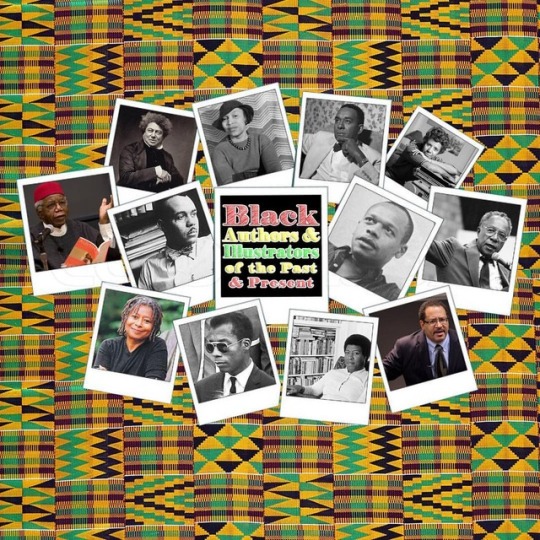
This #BlackHistoryMonth, I chose to honor “Black Authors & Illustrators of the Past and Present. I have had the privilege to learn about 28 authors and nine illustrators that have expanded our thinking through words and art. Here’s a recap of the past 28 days of Black Literature: 1. Alexandre Dumas; 2. Zora Neale Hurston; 3. Richard Wright; 4. Lorraine Hansberry; 5. Chinua Achebe; 6. Ralph Ellison & John Steptoe; 7. Alex Haley; 8. Alice Walker; 9. James Baldwin; 10. Octavia Butler; 11. Michael Eric Dyson; 12. Toni Morrison & Faith Ringgold; 13. Ta-Nehisi Coates; 14. Chimamanda Ngozi Adichie; 15. Sharon G. Flake; 16. Walter Dean Myers & Christopher Myers; 17. Sharon M. Draper; 18. Jason Reynolds; 19. Nikki Grimes; 20. Kwame Alexander; 21. Nnedi Okorafor; 22. Julius Lester & Floyd Cooper; 23. Jacqueline Woodson & Kadir Nelson; 24. Lesa Cline-Ransome & James Ransome; 25. Patricia & Frederick McKissack; 26. Carole Boston Weatherford & Carole Byard; 27. Virginia Hamilton & Jerry Pinkney; and 28. Joyce Carol Thomas & E.B. Lewis. #BHM https://www.instagram.com/p/BucmFldFAVF/?utm_source=ig_tumblr_share&igshid=12pdr54e0bsi9
0 notes
Photo
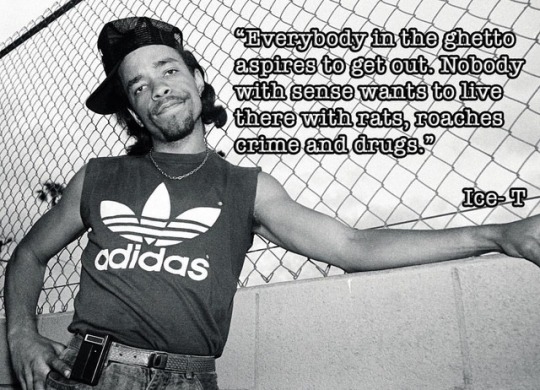
#blackhistorymonth Quote of the Day: “Everybody in the ghetto aspires to get out. Nobody with sense wants to live there with rats, roaches, crime and drugs.” Ice-T #bhm https://www.instagram.com/p/BucjXfHl5Bl/?utm_source=ig_tumblr_share&igshid=1xh325qmrpi3e
0 notes
Photo
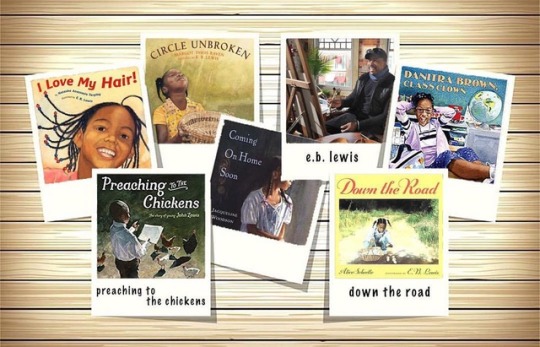
“Black Authors & Illustrators of the Past & Present” Day 28: E.B. Lewis is a illustrator specializing in watercolors. Lewis began showing artistic talent as early as the third grade. He was inspired by two of his artistic uncles. As a child, he attended the Saturday morning Temple University School of Art League and studied with Clarence Wood. Following high school, Lewis enrolled in the Tyler School of Art at Temple, majoring in graphic design & illustration and art education. He was a public school art teacher for twelve years and currently teaches at the University of the Arts in Philadelphia. Lewis began illustrating children’s books in 1992. Some of his notable works include: “I Love My Hair” (written by Natasha Tarpley); “Circle Unbroken” (written by Margot Theis Raven); “Danitra Brown, Class Clown” (written by Nikki Grimes); “Preaching to the Chickens: The Story of Young John Lewis” (written by Jabari Asim); “Coming Home Soon” (written by Jacqueline Woodson); and “Down the Road” (written by Alice Schertle). #BlackHistoryMonth #BHM https://www.instagram.com/p/Buci_7qlWGF/?utm_source=ig_tumblr_share&igshid=krjcwecr6zpi
1 note
·
View note
Photo

#LatePost “Black Authors & Illustrators of the Past & Present” Day 28: Joyce Carol Thomas is a poet, playwright, and author. Her parents were farm workers, picking crops alongside Mexican migrant workers. Thomas earned a bachelor’s in Spanish from San Jose State University and a master’s in education from Stanford. She taught courses in French, Spanish, Black studies, drama & English at several institutions. In 1982, Thomas published her first young adult novel, “Marked By Fire.” Some of her other notable books include: “Linda Brown, You Are Not Alone: The Brown vs. Board of Education Decision,” “Joy,” “Bright Shadows,” “Cherish Me,” “The Blacker the Berry,” and “Shouting.” #BlackHistoryMonth #BHM https://www.instagram.com/p/BucfveRFNZO/?utm_source=ig_tumblr_share&igshid=be452poem6w3
0 notes
Photo
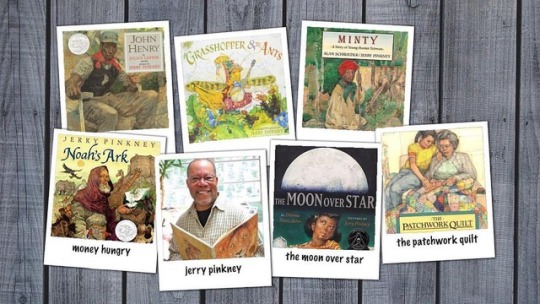
#LatePost “Black Authors & Illustrators of the Past & Present” Day 27: Jerry Pinkney is an author and illustrator. Pinkney began drawing when he was just four years old. As a child, his love of and talent drawing helped elevate his self-esteem caused by his struggles with dyslexia. Pinkney was awarded a scholarship to the Philadelphia Museum College of Art. After graduation, he spent some time working as a greeting card designer. He co-founded Kaleidoscope Studios with two fellow artists and his own studio two years later. Some of Pinkney’s notable works include: “The Grasshopper & Ants,” “John Henry” (written by Julius Lester), “Minty: A Story of Young Harriet Tubman” (written by Alan Schroeder), “Noah’s Ark,” “Moon Over Stars” (written by Dianna Hutts Aston), and “The Patchwork Quilt” (written by Valerie Flournoy). #BlackHistoryMonth #BHM https://www.instagram.com/p/BucfkW2lfww/?utm_source=ig_tumblr_share&igshid=1basxtx7iheh2
0 notes
Photo

#LatePost “Black Authors & Illustrators of the Past & Present” Day 27: Virginia Hamilton is an author of over 40 books. Hamilton graduated at the top of her high school class and enrolled at Antioch College. She would eventually transfer to Ohio State University and majored in literature & creative writing. After college, Hamilton worked as a museum receptionist, cost accountant and nightclub singer, while working toward her dream of becoming a published writer. During her career, Hamilton won every major award in youth literature. Some of her notable works include: “Zeely;” “Her Stories: African American Folktales, Fairy Tales and True Tales;” “Time Pieces: The Book of Times;” “Bruh Rabbit and the Tar Baby Girl;” and “The People Could Fly: American Black Folktales.” #BlackHistoryMonth #BHM https://www.instagram.com/p/Bucdwz2lIan/?utm_source=ig_tumblr_share&igshid=1sly2t3htr3ld
0 notes
Photo
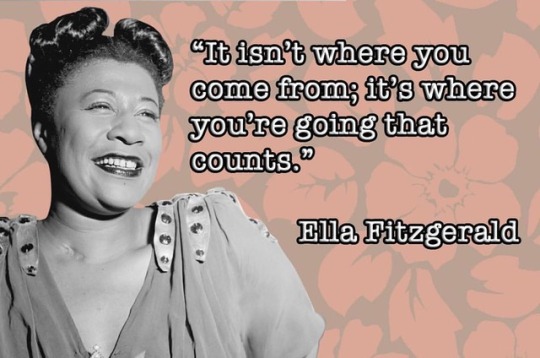
#LatePost #BlackHistoryMonth Quote of the Day: “It isn’t where you come from; it’s where you’re going that counts.” Ella Fitzgerald #BHM https://www.instagram.com/p/BucYgT0FXcA/?utm_source=ig_tumblr_share&igshid=1b8o7jq41f4lc
0 notes